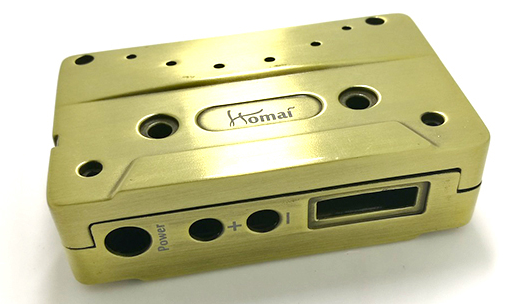In today’s guide, we are going to be presenting some problems to be considered in making aluminum alloy die casting mold.

What Conditions Do Aluminum Alloy Die Casting Molds Need To Meet For Working Environment?
1. Good wear resistance
When aluminum alloy is plastically deformed in the die casting die cavity, it flows and slides along the cavity surface, causing severe friction between the cavity surface and the blank, which leads to the failure of aluminum alloy die casting mold due to wear. Therefore, the wear resistance of materials is one of the most basic and important properties of aluminum alloy die casting molds.
Hardness is the main factor affecting wear resistance. In general, the higher the hardness of aluminum alloy die casting mold parts, the smaller the wear amount, and the better the wear resistance. In addition, wear resistance is also related to the type, quantity, shape, size and distribution of carbides in materials.
2. Strength and toughness
The working conditions of die casting molds are very bad, and some of them often bear large impact loads, which leads to brittle fracture. In order to prevent aluminum alloy die casting mold parts from suddenly breaking when working, the die should have high strength and toughness. The toughness of the die mainly depends on the carbon content, grain size and microstructure of the material.
3. Fatigue fracture performance
In the working process of aluminum alloy die casting mold, fatigue fracture often occurs under the long-term effect of cyclic stress. Its forms include low energy repeated impact fatigue fracture, tensile fatigue fracture, contact fatigue fracture and bending fatigue fracture. The fatigue fracture performance of aluminum alloy die casting die mainly depends on its strength, toughness, hardness, and the content of inclusions in the material.
4. High temperature performance
When the working temperature of aluminum alloy die casting mold is high, the hardness and strength will decrease, leading to early wear or plastic deformation of aluminum alloy die casting mold and failure. Because the aluminum alloy die casting mold material should have high tempering stability, to ensure that the aluminum alloy die casting mold has high hardness and strength at the working temperature.
5. Cold and hot fatigue resistance
Some aluminum alloy die casting molds are repeatedly heated and cooled during the working process, which makes the surface of the cavity subject to tension and pressure, causing surface cracking and spalling, increasing friction, hindering plastic deformation, reducing dimensional accuracy, and leading to mold failure. Cold and hot fatigue is one of the main forms of failure of hot working aluminum alloy die casting molds, which should have high cold and hot fatigue resistance.
6. Corrosion resistance
When some aluminum alloy die-casting molds, such as plastic molds, are working, due to the presence of chlorine, fluorine and other elements in the plastic, strong corrosive gases will be separated after being heated, which will erode the surface of the mold cavity, increase its surface roughness, and aggravate wear failure.
Process Performance Requirements That The Mold Needs To Meet
The manufacturing of aluminum alloy die casting mold generally involves forging, cutting, heat treatment and other processes. In order to ensure the manufacturing quality of the mold and reduce the production cost, its materials should have good forgeability, machinability, hardenability, hardenability and grindability. It shall also have small oxidation, decarburization sensitivity and quenching deformation cracking tendency.
1. Forgeability
It has low hot forging deformation resistance, good plasticity, wide forging temperature range, and low tendency of forging crack, cold crack and precipitation of network carbide.
2. Annealing process
The spheroidizing annealing temperature range is wide, the annealing hardness is low and the fluctuation range is small, and the spheroidizing rate is high.
3. Machinability
Large cutting parameters, low tool wear and low surface roughness.
4. Oxidation and decarburization sensitivity
When heated at high temperature, the oxidation resistance is good, the decarburization speed is slow, the heating medium is insensitive, and the tendency to produce pitting is small.
5. Hardenability
It has uniform and high surface hardness after quenching.
6. Hardenability
After quenching, a deeper hardened layer can be obtained, which can be hardened by using a mild quenching medium.
7. Quenching deformation and cracking tendency
Conventional quenching has small volume change, slight shape warping and distortion, and low tendency of abnormal deformation. Conventional quenching has low sensitivity to cracking and is insensitive to quenching temperature and workpiece shape.
8. Grindability
The grinding wheel has small relative loss, no burn, large limit grinding amount, is insensitive to the quality of the grinding wheel and cooling conditions, and is not prone to abrasion and grinding cracks.

